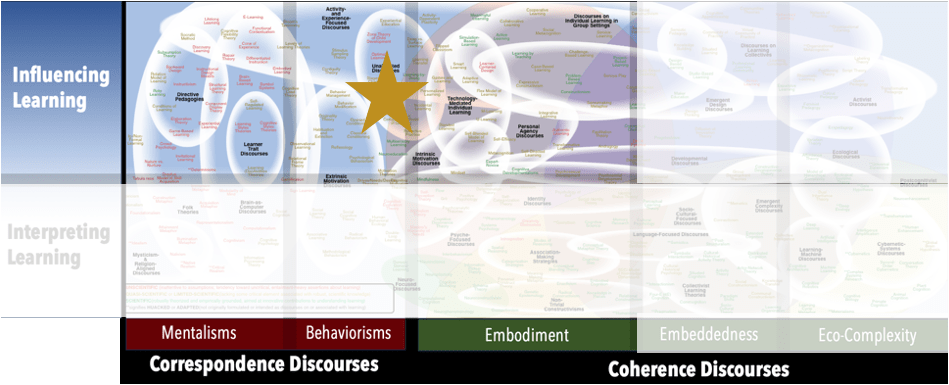AKA
Programmed Instruction
Focus
Formatting information for effective individual learningPrincipal Metaphors
- Knowledge is … information
- Knowing is … mastery
- Learner is … a progressor (individual)
- Learning is … stepped acquisition
- Teaching is … sequenced delivery
Originated
1920s, but more fully developed in the 1960sSynopsis
Programmed Learning is an approach to formatting information and activities for learners. Content is first parsed and arranged in a logical and tested sequence. It is then presented to the learner in small steps, and thresholds of demonstrated understanding must be met before proceeding. The learner is thus tested for comprehension regularly and provided immediate feedback. Programmed Learning was the format used for most distance learning prior to the emergence of more interactive online platforms. It is also employed in some versions of Self-Directed Learning, computer-assisted instruction, and young children’s television programs. Programmed Learning involves four core aspects:- Small Steps – learners move in an orderly, step-by-step fashion, dealing with only a small amount of information at each step
- Overt Responding – at each step, an overt response is elicited from the learner
- Immediate Feedback – learners receive some manner of immediate response (e.g., reinforcement or correction)
- Self-Pacing (Self-Paced Instruction) – one is able to determine the pace at which one moves through the learning program
- Teaching Machine – any mechanical device that presents pre-sequenced content, tasks to assess learning of that content, and feedback on those tasks. As technology has advanced in recent decades, Teaching Machines have evolved from strictly linear sequences able to assess only correctness of responses to sophisticated branching programs that provide nuanced feedback as they adapt to learner sense-making.
Commentary
There is ample evidence that Programmed Learning is more effective than learning formats that move too quickly, require nothing of learners, and offer no formative feedback – which is to say, Programmed Learning has been demonstrated to be more effective than most traditional teaching practices. Research has tended to focus on “acquisition of content” rather than application or development of deep understanding, suggesting that the approach rides atop Folk Theories (and, sometimes Behaviorisms) and raising questions of whether it is well fitted to contemporary learning emphases and needs. This point is underscored by the interchangeability of the terms “programmed learning” and programmed training.”Authors and/or Prominent Influences
Sidney L. Pressey; B.F. SkinnerStatus as a Theory of Learning
Programmed Instruction is not a theory of learning.Status as a Theory of Teaching
Programmed Instruction is a theory of teaching – or, more descriptively, a guideline for structuring established knowledge in a manner that makes it accessible to a learner who is not in the presence of a teacher.Status as a Scientific Theory
Programmed Instruction has a substantial evidence base, in which information that is well parsed, appropriately sequenced, and regularly assessed can be learned more effectively than information presented in absence of one of those elements. However, proponents of the perspective are uncritical (and, it appears, generally unaware) of the metaphors used to characterize learning.Subdiscourses:
- Immediate Feedback
- Overt Responding
- Self-Pacing (Self-Paced Instruction)
- Small Steps
- Teaching Machine
Map Location

Please cite this article as:
Davis, B., & Francis, K. (2023). “Programmed Learning” in Discourses on Learning in Education. https://learningdiscourses.com.
⇦ Back to Map
⇦ Back to List
